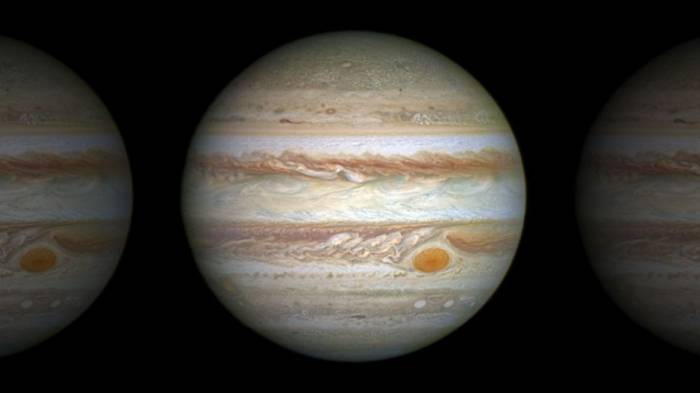A team of researchers created a timeline for the diminishing cyclone by looking at archived observations of the Great Red Spot, according to a recent statement by NASA. To trace the storm's size, color, drift rate and shape, they combined these historical findings with spacecraft data going as far back as 1979, from the two Voyager missions, as well as data obtained from annual observations conducted with NASA's Hubble Space Telescope by the Outer Planets Atmospheres Legacy project.
One surprising finding is that the Great Red Spot is growing taller. This study, led by Amy Simon, planetary atmospheres expert at NASA's Goddard Space Flight Center in Greenbelt, Maryland, found that the diameter of the storm is shrinking, but its clouds are stretching upwards.
"It's almost like clay being shaped on a potter's wheel," NASA official Elizabeth Zubritsky said in a recent statement about the findings. "As the wheel spins, an artist can transform a short, round lump into a tall, thin vase by pushing inward with his hands. The smaller he makes the base, the taller the vessel will grow."
Jupiter's Great Red Spot is thought to have been so large that at one point it could have contained three Earths inside its width, according to NASA. As of April 3, 2017, the storm was 10,159 miles (16,350 kilometers) wide, slightly wider than Earth's diameter.
Researchers don't know why the storm has become more intensely orange since 2014, but suggest it's possible that the growing height of the Great Red Spot might be the cause. As the storm stretches upward, the chemicals that give color to the storm might reach higher in the atmosphere, where they would receive more UV radiation from the sun and therefore darken.
"If the trends we see in the Great Red Spot continue, the next five to 10 years could be very interesting from a dynamical point of view," said Rick Cosentino, co-author of the study and postdoctoral fellow at Goddard. "We could see rapid changes in the storm's physical appearance and behavior, and maybe the red spot will end up being not so great after all."
The study was published on March 13 in the Astronomical Journal.
More about: #Jupiter
















































